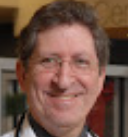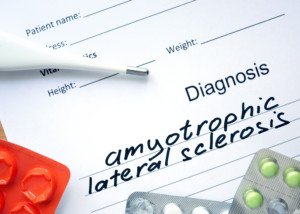
Muscle twitching is quite a popular topic, but not one you’ll hear a lot about at the water cooler.
In cyberspace, twitching muscles are discussed quite prominently, because muscle twitching, though extremely common, is also a symptom of one of the most feared fatal diseases: amyotrophic lateral sclerosis (ALS).
But twitching muscles don’t mean you have ALS, any more than a little gas means you have colon cancer.
Unfortunately, once a person gets into the “I think I might have ALS” groove, the anxiety over this can become chronic — unless the person learns to see muscle twitching for what it really is: just tired muscles working their issues out.
“The delicate balance between nerves, their stimulation and chemistry, and the muscles they feed is often affected by fatigue, stress, caffeine or other quite benign influences,” says Marc I. Leavey, MD, a primary care physician with 40-plus years of experience.
He adds: “When the balance is not correct, the muscle can twitch in a seemingly random fashion, not under your control.
“It does not take much; staring at the computer screen too long can start the lower lid dancing.

Freepik.com, jcomp
“The vast majority of such twitching is self-limiting, and resolves with correction of the underlying defect.
“As with many other weird symptoms, if it is not getting better, or if it seems really abnormal, see your health care professional.”
Anyone with a lot of muscle twitching will tell you that movement almost always stops the twitching.
Perhaps this is because when a muscle is forced to work, it’s not relaxed enough to twitch.
And anyone who twitches a lot will tell you that most muscle twitching occurs while in a relaxed state.

This is maybe because a relaxed, at-rest muscle can “feel free” to twitch all it wants.
Dr. Leavey says, “Try this: Stand in a doorway and lift your arms, hard, into each doorpost. Hold that position for about 30 seconds.
“Now step out and let your arms relax by your sides. OMG – MY ARMS ARE COMING UP ALL BY THEMSELVES!
“By stressing one group of muscles, resting them allows the other group, that was opposed by the exercise, to take action.
“Similarly, muscles are always adjusting our balance and status, shifting weight on the chair or feet, and, if you are at rest, you’re going to feel that.
“You’ll feel a twitch or movement that makes no sense. Well, to your body, it does.”
The reason why there is a certain percentage of people out there who obsess about the possibility of having ALS is because they were in the wrong place at the wrong time: They googled those keywords: muscle twitching.
Googling these words will bring up links to ALS, but also multiple sclerosis, a few other neurological disorders and Lyme disease.
One day I put my legs through a punishing weight routine at the gym.
They were sore the next day; delayed onset muscle soreness. But I used my treadmill that next day, running on top of the soreness.
My hamstrings were aching and stiff, and I took to sitting at the computer for an extended time.
Lo and behold, the twitching began in my hamstring muscles. But I must say, it felt GOOD! It was almost like tiny fingers were giving me a nice massage.
It felt like miniature fingers were in there, working their way around in my beat muscles, working out the accumulation of lactic acid and other byproducts of anaerobic exertion (from the weightlifting and also the cardio).
And when the twitching began dissipating, I was disappointed. I wanted this automatic massage to continue.
But I guess the job of the twitching muscles was completed; perhaps the lactic acid had been dispersed.
So next time your muscles twitch, don’t despair; think of it as your body’s built-in massage mechanism for fatigued muscles.

Dr. Leavey was formerly with Mercy Medical Center in Baltimore, MD, where his focus was primary care and internal medicine. He has a blog, STRING OF MEDICAL PEARLS.
 Lorra Garrick has been covering medical, fitness and cybersecurity topics for many years, having written thousands of articles for print magazines and websites, including as a ghostwriter. She’s also a former ACE-certified personal trainer.
Lorra Garrick has been covering medical, fitness and cybersecurity topics for many years, having written thousands of articles for print magazines and websites, including as a ghostwriter. She’s also a former ACE-certified personal trainer.
.


























